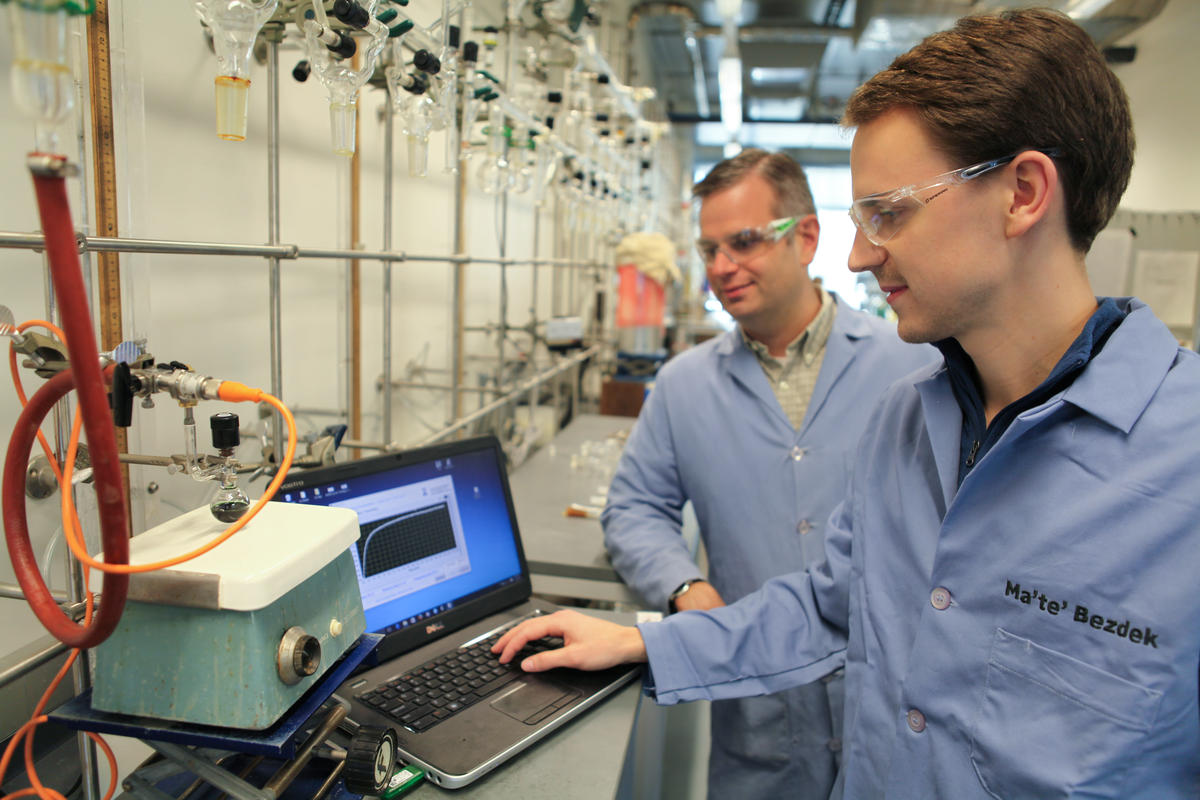Weakened bonds liberate hydrogen and new insights for coordination chemistry
New findings from Princeton University provide an initial step towards developing a reaction to convert ammonia gas into hydrogen gas, a promising and clean burning alternative fuel. Ammonia (NH3) is an attractive source for hydrogen (H2) because it’s much easier to transport and store.
According to the study published in Science, the team found that when ammonia is attached to a special molybdenum-based compound, its bonds were weakened and released hydrogen gas under gentle heating. “It’s a way of generating hydrogen that takes advantage of the bond weakening phenomenon and serves as a proof of concept,” said lead author Máté Bezdek, a graduate student in the Chirik lab.

Photo by C. Todd Reichart
The discovery was an interesting, yet unintended result of their efforts to answer a much more fundamental question about ammonia, Bezdek said. Though ammonia had been studied exhaustively and is found in many important metal-based compounds, such as the leading chemotherapy drug cisplatin, the precise effect that the neighboring metal atom had on ammonia’s N-H bonds was still unknown.
“Nobody has really made those measurements,” said corresponding author Paul Chirik, the Edwards S. Sanford Professor of Chemistry. “Ammonia is one of the first ligands that you learn about in coordination chemistry, but nobody knows what the bond strength is when you stick it on a metal.”
Scientists rely on bond strengths to predict the outcome of chemical reactions, usually by referring to standard bond strength tables compiled from measurements reported in the literature. The N-H bond strength for metal-coordinated ammonia complexes have been missing because the compounds needed to make the measurements were really hard to synthesize.
The Chirik lab was able to make a molybdenum-based molecule that provides a sufficiently stable platform to make the necessary bond strength measurements. It also gives researchers a tool for understanding how to design ammonia-metal compounds depending on their desire to weaken or fortify N-H bonds. Ideally, their model could be used to design a complex that would be able to convert ammonia into hydrogen in a catalytic reaction, but that’s still a long way off.
In addition to the researchers’ experimental measurements, they used computational methods to calculate theoretical bonds strengths, and found good agreement between the data. They demonstrated the bond weakening effect on other small molecules besides ammonia, including water and another nitrogen-containing compound called hydrazine.
“There’s nothing more fundamental in chemistry than the strength of a chemical bond,” Chirik said. “When you can make a contribution to that knowledge that’s pretty important, and it’s remarkable to me that you still can in 2016.”
Read the full article here:
“Bezdek, M.; Guo, S.; Chirik, P. J. “Coordination-induced weakening of ammonia, water, hydrazine X-H bonds in a molybdenum complex.” Science 2016, 354, 730.
Read the Science Perspective article on the work here:
This work was supported by the U.S. Department of Energy, Office of Science, Basic Energy Science (grant DE-SC0006498).
